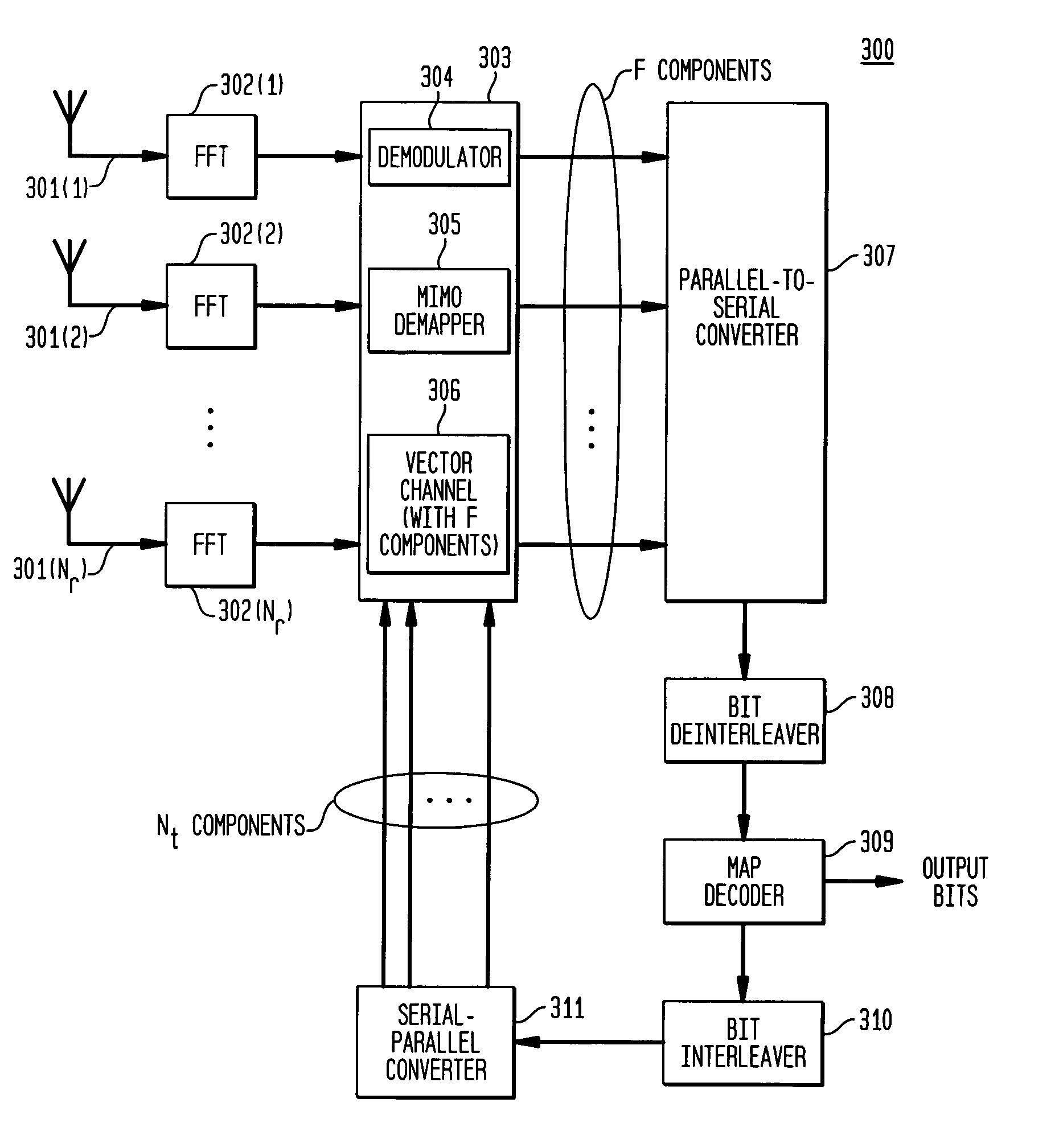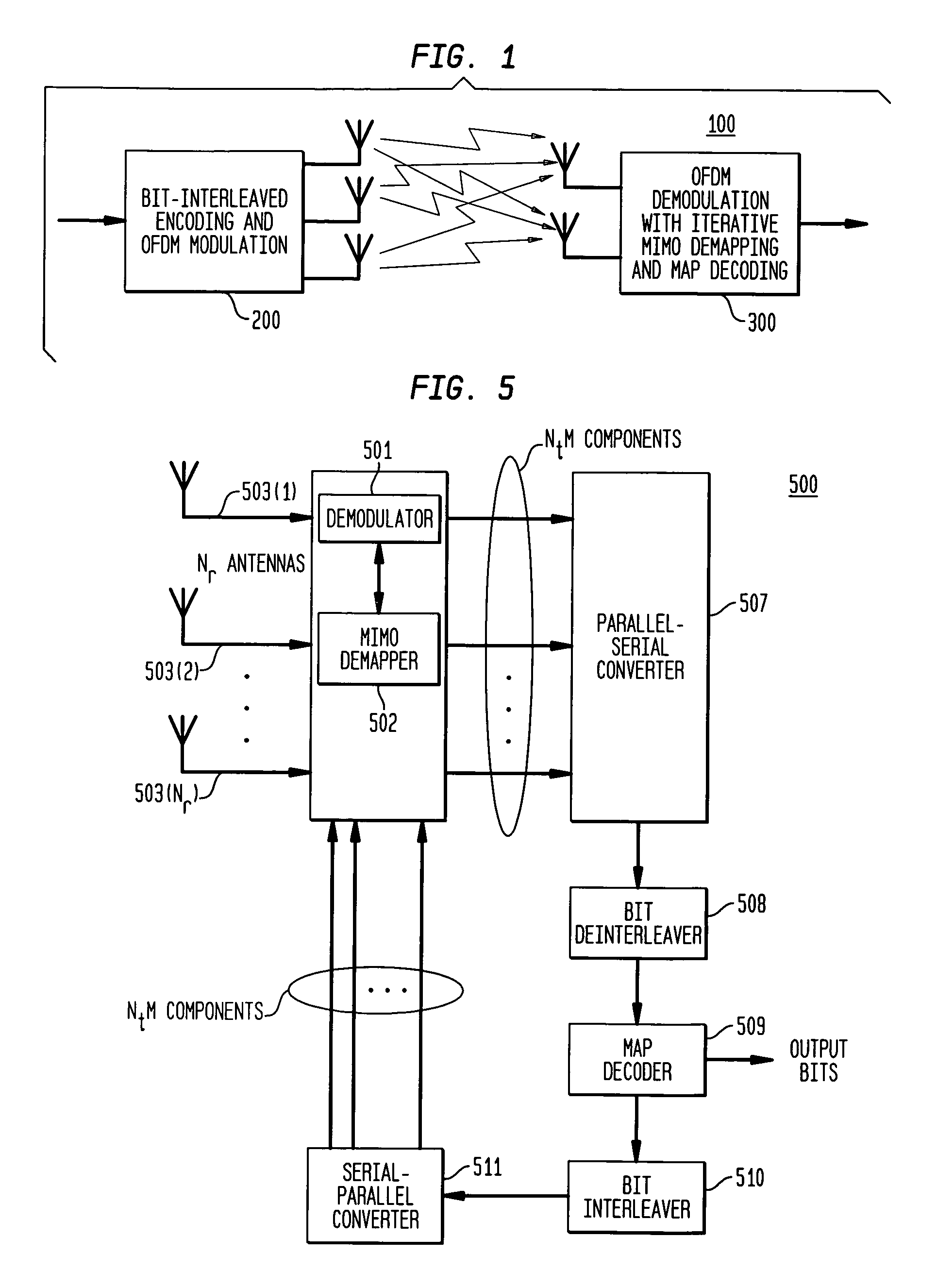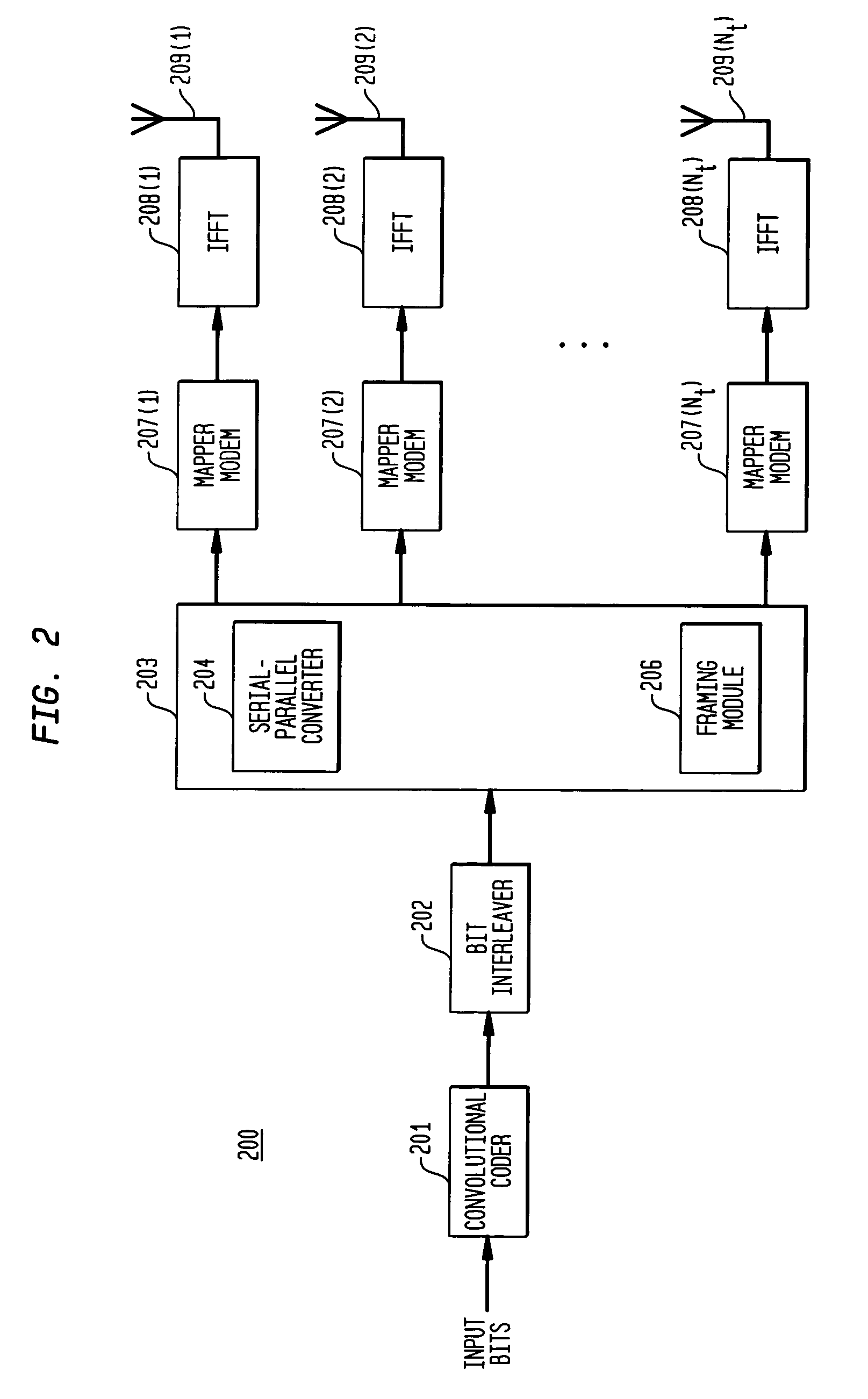Reduced complexity receiver for space-time- bit-interleaved coded modulation
a receiver and space-time bit technology, applied in the field of data modulation and demodulation in a communication network, can solve the problems of significant contribution to signal degradation, and achieve the effects of reducing the number of evaluations used for demapping, minimizing cost function error (mcfe), and improving bit error rate performan
- Summary
- Abstract
- Description
- Claims
- Application Information
AI Technical Summary
Benefits of technology
Problems solved by technology
Method used
Image
Examples
Embodiment Construction
[0016]FIG. 1 shows a coded modulation system 100 employing one or more embodiments of the present invention. Coded modulation system 100 is characterized by transmitter 200 applying space-time coding with bit-interleaved coded modulation that is combined with a multi-carrier OFDM modulation; and receiver 300 applying OFDM demodulation with iterative demapping and decoding. Such coded modulation systems in accordance with the present invention may be advantageously employed in wireless local / wide area network (LAN / WAN) applications.
[0017]FIG. 1 shows an example of a system with 3 transmit antennas and 2 receive antennas, and a system model may be defined for the general case of Nt transmit antennas (Nt an integer and Nt≧2) and Nr receive antennas (Nr an integer and Nr≧1). Each of the Nr receive antennas receives signals from the Nt transmit antennas.
[0018]While the exemplary embodiment is described for space-time coding with bit-interleaved coded modulation, other types of coded modu...
PUM
 Login to View More
Login to View More Abstract
Description
Claims
Application Information
 Login to View More
Login to View More - R&D
- Intellectual Property
- Life Sciences
- Materials
- Tech Scout
- Unparalleled Data Quality
- Higher Quality Content
- 60% Fewer Hallucinations
Browse by: Latest US Patents, China's latest patents, Technical Efficacy Thesaurus, Application Domain, Technology Topic, Popular Technical Reports.
© 2025 PatSnap. All rights reserved.Legal|Privacy policy|Modern Slavery Act Transparency Statement|Sitemap|About US| Contact US: help@patsnap.com



